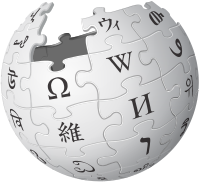
Photo from wikipedia
Currently, the number of Facebook pages is dramatically increased on Facebook because the users can easily create their own pages for free to promote their products and services for marketing… Click to show full abstract
Currently, the number of Facebook pages is dramatically increased on Facebook because the users can easily create their own pages for free to promote their products and services for marketing purposes. Unfortunately, some of pages are created for malicious intention. Therefore, detecting and identifying malicious Facebook pages is a challenging task. To achieve the task, features extracted from four parts of pages, i.e., page details, product/service details, user responses and post behavior of administrator are examined for the detection. The extracted features are investigated to detect reliable and unreliable pages based on supervised machine learning. First, Facebook pages are randomly collected and then they are labeled by five users. Facebook pages with agreement of five users are selected and their information are retrieved using the Facebook Graph API. Next, features are extracted from the information and investigated in the experiments. The experimental results indicate that the classification prediction is improved to 91.37% of accuracy. Finally, the significant features are analyzed to distinguish between unreliable and reliable pages.
Journal Title: Artificial Life and Robotics
Year Published: 2018
Link to full text (if available)
Share on Social Media: Sign Up to like & get
recommendations!